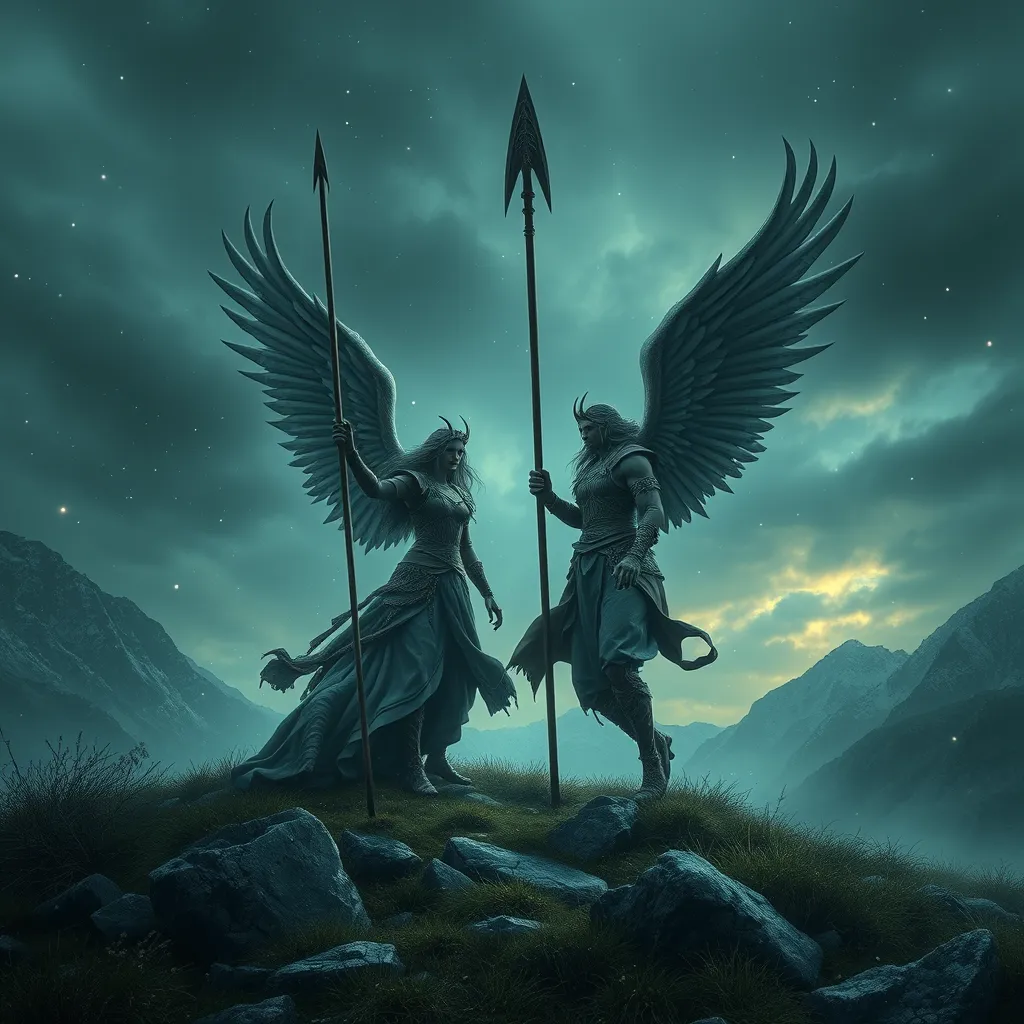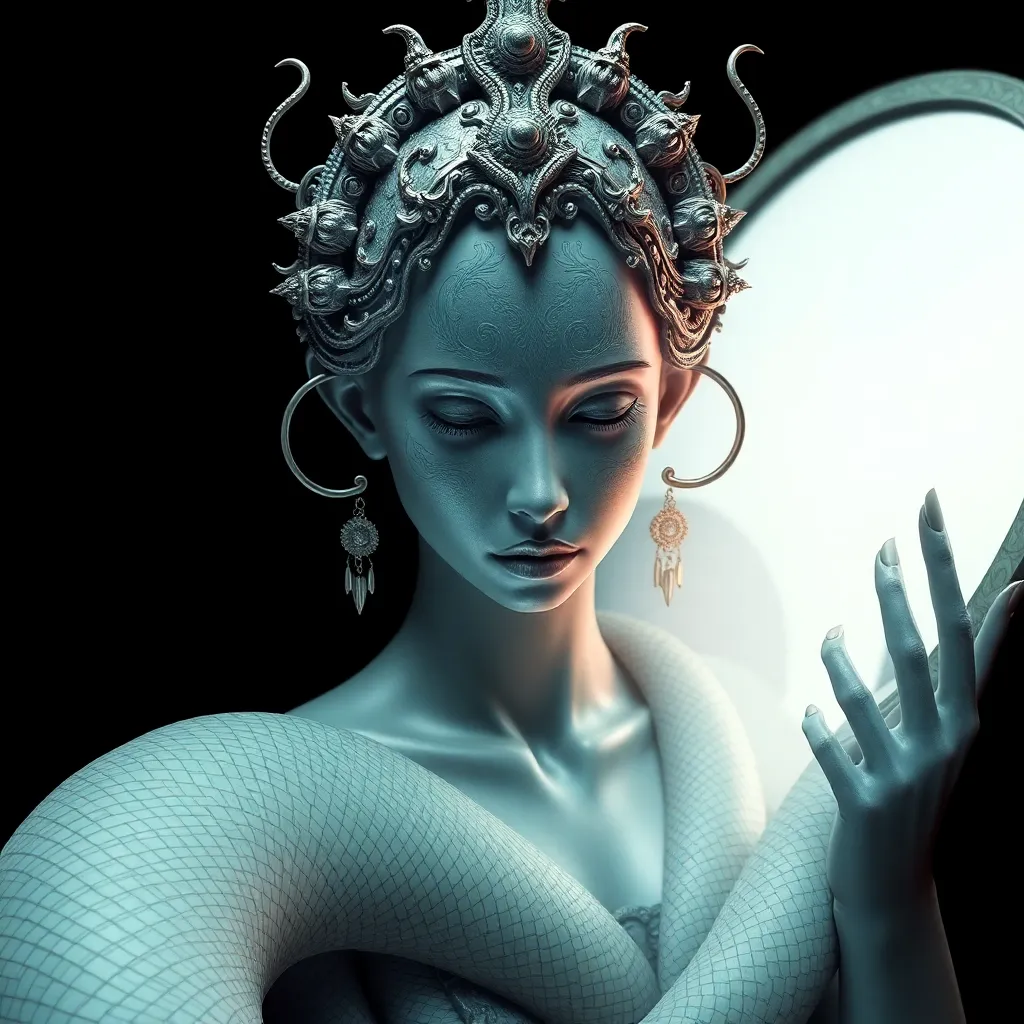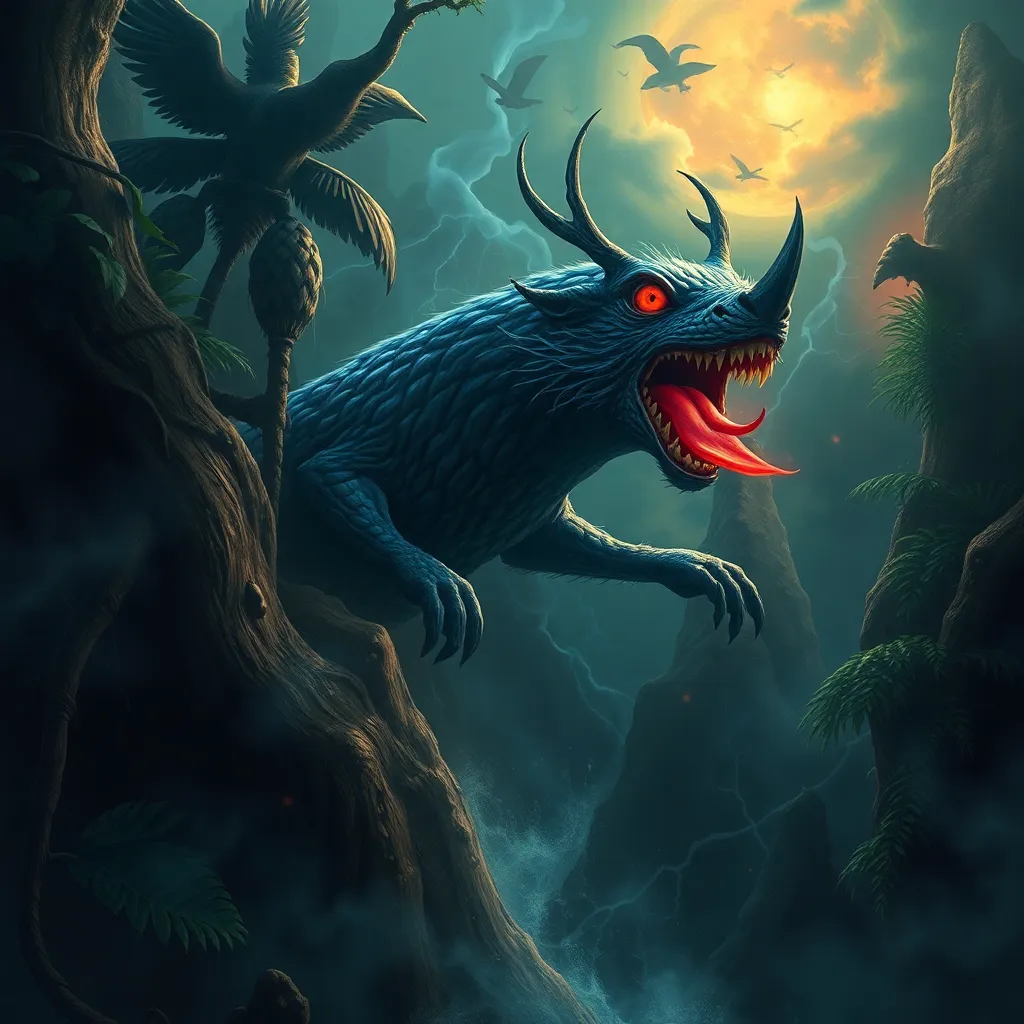Valkyries of the North: Exploring the Norse Mythology of the Choosers of the Slain
I. Introduction to Valkyries
The Valkyries are among the most fascinating figures in Norse mythology, representing a complex interplay of fate, war, and the afterlife. These warrior maidens are often depicted as the choosers of the slain, tasked with selecting those who would die in battle and escorting them to Valhalla, the hall of the slain, ruled by the god Odin.
In this article, we will delve into the origins, characteristics, and cultural significance of Valkyries, exploring their roles in Norse cosmology and their impact on modern culture. By shedding light on these legendary figures, we aim to understand their importance in both ancient and contemporary contexts.
II. Origins and Historical Context
The concept of Valkyries can be traced back to early Norse texts and sagas, where they are mentioned as divine beings who serve Odin. The word “Valkyrie” itself comes from the Old Norse “valkyrja,” meaning “chooser of the slain.” These early references can be found in sources such as the Poetic Edda and the Prose Edda, which provide insights into their roles and characteristics.
In Viking society, Valkyries held significant cultural importance. They were not only seen as warriors but also as symbols of honor and valor, embodying the ideals of bravery that were highly valued among the Norse people. As the Vikings engaged in frequent battles and raids, the belief in Valkyries provided comfort and hope, suggesting that fallen warriors would be honored in the afterlife.
Over time, the concept of Valkyries evolved, reflecting changes in societal values and beliefs. From fierce battle maidens to more ethereal figures, their depictions shifted, yet their core role as choosers of the slain remained constant.
III. Characteristics and Depictions
Valkyries are often depicted with striking physical attributes and attire that symbolize their warrior nature. Common characteristics include:
- Beautiful and fierce appearance
- Armor and weapons, such as helmets and shields
- Flowing hair, sometimes depicted as being wind-tossed due to their connection to battle
In addition to their physical traits, Valkyries are associated with several symbols and attributes, including:
- Ravens, which are linked to Odin and symbolize knowledge and battle
- Spears and swords, representing their role as warriors
- Horses, often depicted as flying through the skies to reach the battlefield
The representations of Valkyries in art and literature have varied widely over the centuries, from the heroic figures in ancient sagas to the romanticized versions in modern adaptations. They are often portrayed as both powerful and graceful, emphasizing their dual nature as warriors and divine beings.
IV. The Role of Valkyries in Battle
The primary role of Valkyries is to select warriors destined to die in battle. This process is steeped in the intricate web of fate that permeates Norse mythology. Valkyries do not simply choose randomly; their selection is influenced by the will of the gods and the threads of fate spun by the Norns, the three goddesses of destiny.
In battle, Valkyries are seen as both protectors and harbingers of death. They assist the chosen warriors, providing them with courage and strength while simultaneously guiding them to their ultimate fate. This dual role reflects the complex nature of life and death in Norse cosmology, where honor in battle is paramount.
V. Valkyries in Norse Cosmology
Valkyries have a profound connection to Odin, the chief of the gods, who presides over Valhalla. This grand hall is where the souls of slain warriors are taken, allowing them to prepare for the final battle during Ragnarök, the end of the world in Norse mythology. The relationship between Valkyries and Odin highlights the theme of sacrifice and valor that permeates Norse beliefs.
Valhalla itself is significant in Norse cosmology, representing an idealized afterlife for warriors who have died honorably. The significance of this hall is twofold: it serves as a reward for bravery and as a place of preparation for a final confrontation with chaos.
The interplay between fate, free will, and the Valkyries’ choices raises intriguing questions about the nature of destiny in Norse mythology. While Valkyries select the slain, their choices are often viewed as manifestations of the larger cosmic order established by the gods.
VI. Valkyries in Modern Culture
In contemporary culture, the figure of the Valkyrie has seen a resurgence in literature, film, and art. Modern interpretations often emphasize themes of empowerment and strength, portraying Valkyries as symbols of female prowess in combat and leadership.
Examples of Valkyries in modern media include:
- Films such as “Thor” and “Valhalla Rising,” where Valkyries are depicted as formidable warriors.
- Literature that reimagines Norse myths, often placing Valkyries at the center of the narrative.
- Artworks that celebrate their warrior spirit and connection to nature.
The growing interest in Norse mythology reflects a broader cultural trend, where ancient myths are reinterpreted to resonate with contemporary values and themes, particularly regarding female empowerment.
VII. Comparative Analysis
Valkyries share similarities with figures from other mythologies, such as the Greek Amazons or the Celtic Morrigan. These warrior maidens often embody the same themes of strength, battle, and the duality of life and death.
Key comparisons include:
- The Amazons, fierce female warriors in Greek mythology, who also fought valiantly in battle.
- The Morrigan, a goddess of war and fate in Celtic mythology, who could control the outcomes of battles and was associated with death.
While these figures share thematic parallels, they also exhibit distinct differences shaped by their respective cultural contexts. The universal archetype of the warrior maiden transcends individual mythologies, highlighting a shared recognition of female power in combat.
VIII. Conclusion
In summary, Valkyries are integral figures in Norse mythology, representing the complexities of war, fate, and the afterlife. Their roles as choosers of the slain and their connections to Odin and Valhalla underscore their significance in ancient beliefs.
The lasting legacy of Valkyries in modern society is evident in their portrayal as symbols of strength and empowerment, inviting further exploration of Norse mythology and its rich tapestry of characters and themes. As we continue to delve into these ancient narratives, we unearth timeless stories that resonate with contemporary values and ideals.



